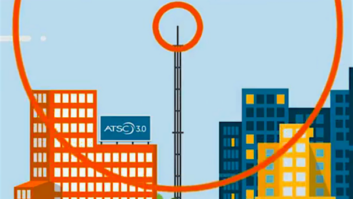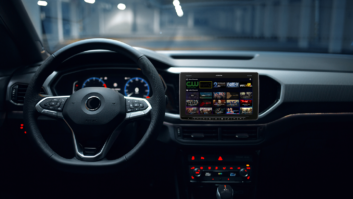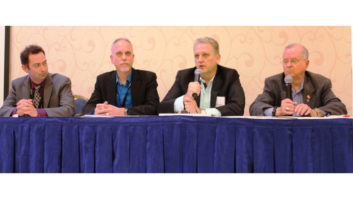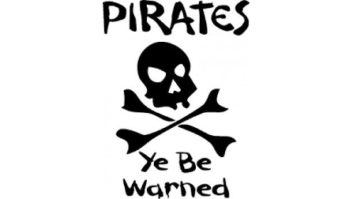Guy Wire has presented a thoughtful and metaphorically rich rebuttal to several points from my Big Picture column in the March 1 issue of RW. Let me respond, in turn, to a few of Guy’s comments here.
More of the same
First, Guy questions whether IBOC is really equivalent to previous failed broadcast enhancements like FMX, RBDS and others. While Guy is correct in noting that the marketing forces lined up behind IBOC seem better organized, this function alone cannot manufacture sufficient consumer demand. So in this respect, IBOC is just the next candidate in the parade, and although it may offer somewhat more than previous proposals, it has the same uphill road to climb. The business-related restrictions placed on the current format by its developers only increase the slope of this path.
Moreover, unlike the broadcast industry’s slow and steady pace, the consumer electronics environment is fast and fickle. If IBOC doesn’t take off quickly, the CE machine will drop it like a rock. Guy prescribes an FCC-mandated transition, but as previously stated, I can’t see the Commission doing that without any spectrum recovery in play, and particularly not for a proprietary standard with its currently proposed licensing costs.
(Talk about fuzzy math, Guy — try Ibiquity’s assessment of >$50 million in fees from broadcasters just for the privilege of having to buy and install new equipment that delays your signal to all listeners, and improves it for perhaps a few who buy new receivers. A lot of the industry may remain tacit in the discussion we’re currently engaging, but will vote with their pocketbooks on the issue.)
Understanding standards
Next, Guy should know that standards processes are either open or they’re not. A “de facto open standard” is an oxymoron, and tantamount to being partially pregnant. The important difference is not so much in the process of developing the standard, but in the ultimate ownership of the specification.
I’ll talk more about this in an upcoming column, but for now we only have to look again at the proposed licensing fees. It’s unlikely these would emerge from an open standard process. Similarly, who controls compliance and certification, and how the migration of the spec to its future versions is handled are other key points that remain under unilateral control in a proprietary case, and the impact of these issues on the digital radio future have yet to be fully explored (i.e., other potential “gotchas” down the road).
But in the IBOC case, even the spec-development process was steered by broadcasters for broadcasters. Sure the NRSC is ostensibly an open body, but all they did was provide a critique of the system after the fact. (Some would argue that it was a self-graded test, since the Committee’s membership includes substantial overlap of the Ibiquity partners, but I’ve got more confidence in the NRSC’s independence to feel that way myself.)
Again, my hat’s off to Ibiquity for managing this process so well to their advantage. Take it if you can get it, boys, but don’t kill radio’s best hope for the future in the process.
Service appeal
Guy points to new data services as the answer to the quantitative expansion that I feel is necessary. He may be right, but remember, there won’t be that much more data capacity in IBOC than we have today on FM subcarriers during the hybrid phase.
(Today an FM station can theoretically carry a total of ~40 kbps of data on its subcarriers, so the new capacity offered by IBOC increases it by a factor of ~1.5. Assuming the analog subcarriers remain operational, this brings an FM station’s total data capacity to ~100 kbps. While that’s nothing to sneeze at, it’s not what I would characterize as a “dramatic increase,” as Guy does, which might give the reader the impression that orders of magnitude of improvement are involved.)
The more significant difference is that IBOC’s data will be designed in from the beginning, so there could be more successful applications for general-audience oriented, program-associated services (title, artist, etc.) that consumers are getting used to receiving from other digital media. But will this be implemented in a broad and standardized fashion? Even if it is, is it enough to motivate mainstream consumers to adopt IBOC?
Even Guy doesn’t think so. (I’m not sure how he manages to take both sides of this argument at different points in his piece, but somehow he does: Consumers don’t want all these new whiz-bang features on their radios, yet these are what will allow IBOC to succeed…?)
Let me attempt to reconcile this dilemma: Consumers might grow to like these kinds of added services after they have experienced them, after which they wouldn’t want to give them up, yet not very many will be willing to commit the requisite funds to obtain the experience in the first place.
Regarding Guy’s point that there’s already enough variety on the air, I’d reply that a wide range of content that could and should be on the local, free broadcast channels simply isn’t there in this country. Dissatisfaction with commercial radio is high because the scarcity of channels forces broadcasters’ inevitable pursuit of the most mainstream, lowest common denominator appeal. With more channels, broadcasters could (at least theoretically) afford to carry a few higher quality services with somewhat narrower audiences. The higher value of the demographics on these services can make up for the smaller numbers (that’s what too many years at NPR really taught me). If local radio doesn’t provide these needed services, someone else will.
On the matter of temporal interleaving, sure, we’ll probably get used to the delay, but having to delay all analog signals from day one of IBOC service — when there are zero IBOC receivers out there — seems a little hard to swallow for this aging, “real-time” broadcaster.
Once and future formats
Most of Guy’s history review rings true, except for one point: The lack of an FCC mandate for conversion isn’t what doomed AM Stereo, it was the lack of even the preference of a format from the four competing systems involved. The Fowler FCC opted to let the marketplace decide among the formats, each of which provided a service that nobody really cared much about anyway. It was a mistake, and everyone learned from it. In IBOC’s case, the format selection process has already happened, for better or worse, so all the FCC has to do is approve it as a voluntary upgrade. Mandating a conversion to the format it is unlikely, particularly given the licensing process noted earlier.
The view from my crystal ball (Guy says it’s cracked — I prefer to think of it as “well worn”): IBOC will happen, but in its current state, will consumers care? If not, a critical opportunity for progress will have been squandered.












